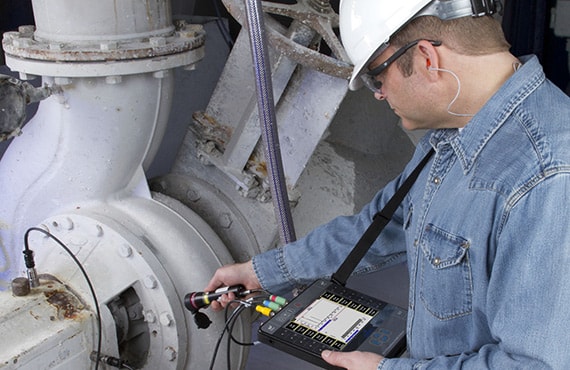EN 388 – Protective Gloves Abrasion Resistance Test
The EN 388 standard is a European norm that specifies requirements and test methods to determine the performance of protective gloves in protecting against mechanical hazards such as cuts, abrasions, punctures, and tear resistance. This particular section focuses on the abrasion resistance aspect, which is crucial for ensuring gloves can withstand wear and tear during prolonged use. In oil & gas environments, where workers frequently handle rough materials and equipment, this test is particularly important.
The abrasion resistance test evaluates how well a glove resists physical wear caused by friction against abrasive surfaces. This property is vital in sectors like oil & gas, where gloves are subjected to constant contact with harsh substances such as sand, gravel, and other abrasive materials. The test simulates real-world conditions experienced by workers during their daily activities, ensuring that the protective equipment they use meets stringent safety standards.
The methodology involves subjecting a sample of the glove material to controlled abrasion using an apparatus designed according to EN 388 specifications. The number of cycles required to abrade through the glove is recorded and used to determine its resistance level. Higher cycle counts indicate better performance, suggesting that the gloves can withstand more rigorous use without compromising their integrity.
The test setup includes a rotating wheel that simulates wear from friction against an abrasive surface. The specimen, typically cut into a standardized shape, is placed between the rotating wheel and a stationary plate. The wheel rotates at a specific speed while being pressed against the glove material with controlled force. This continuous motion replicates the kind of abrasion experienced by workers in field operations.
The result of the EN 388 abrasion resistance test provides critical insights into the durability of protective gloves, enabling quality managers and compliance officers to make informed decisions about the suitability of their chosen protection for high-risk environments. By ensuring that gloves meet the specified performance levels, these tests contribute significantly to worker safety and operational efficiency.
For R&D engineers developing new glove materials or designs, this test offers valuable data points on material selection and processing techniques. It helps in optimizing the balance between comfort, dexterity, and abrasion resistance, which is essential for creating products that enhance productivity without sacrificing safety.
Scope and Methodology
The EN 388 standard encompasses various tests to evaluate different mechanical hazards faced by workers. For the abrasion resistance test, the scope is specifically defined as follows:
- Determining the resistance of protective gloves against abrasion.
- Providing a method for measuring the abrasion resistance of glove materials under controlled conditions.
- Establishing pass/fail criteria based on the number of cycles required to abrade through the glove material.
The test apparatus consists of a rotating wheel that moves at a specified speed and is pressed against the glove sample with a predetermined force. The specimen, which must be prepared according to EN 388 guidelines, is placed between the rotating wheel and a stationary plate. The process simulates real-world scenarios where gloves are exposed to abrasive materials during use.
The test begins by placing the prepared specimen in position between the rotating wheel and the stationary plate. The apparatus then operates according to predefined parameters: speed of rotation, force application, and the type of abrasive surface used. After a set number of cycles or until the glove material fails under these conditions, the testing stops.
The result is recorded as the total number of cycles required before failure occurs. According to EN 388, this value determines whether the gloves pass or fail the abrasion resistance test based on predefined thresholds for different types and classes of protective gloves.
Why Choose This Test
The EN 388 abrasion resistance test is essential for ensuring that protective gloves perform optimally in harsh environments. In the oil & gas industry, where workers often encounter abrasive materials and rough equipment, selecting gloves with adequate abrasion resistance can significantly enhance safety and operational efficiency.
By incorporating this test into their quality control processes, companies can ensure that their employees have access to reliable protection during critical tasks. This not only reduces the risk of injury but also contributes to a positive work environment characterized by trust and respect for worker well-being.
The abrasion resistance test helps in identifying the most suitable materials and designs for different applications within the oil & gas sector. It allows manufacturers to tailor their products to meet specific needs, ensuring that gloves are not only durable but also comfortable and easy to use. This dual approach enhances both safety and productivity.
For procurement officers, this test provides a clear benchmark against which they can evaluate suppliers’ offerings. By prioritizing vendors who offer gloves that pass the abrasion resistance test with high scores, companies can ensure consistent quality across their inventory. This practice also fosters long-term relationships with trusted partners committed to excellence.
In summary, the EN 388 abrasion resistance test is a vital component of any comprehensive safety strategy in the oil & gas industry. Its rigorous methodology ensures that protective gloves are well-suited to withstand the challenges posed by abrasive materials and rough working conditions.
International Acceptance and Recognition
The EN 388 abrasion resistance test is widely accepted and recognized across various countries due to its stringent standards and reliable results. Countries that have adopted this standard include:
- Australia
- Canada
- New Zealand
- United States (with slight variations)
- Several countries in Europe
The test is particularly favored by industries that prioritize worker safety, such as oil & gas, construction, and manufacturing. Its global recognition ensures consistent quality standards regardless of geographical location, promoting a safer working environment worldwide.





